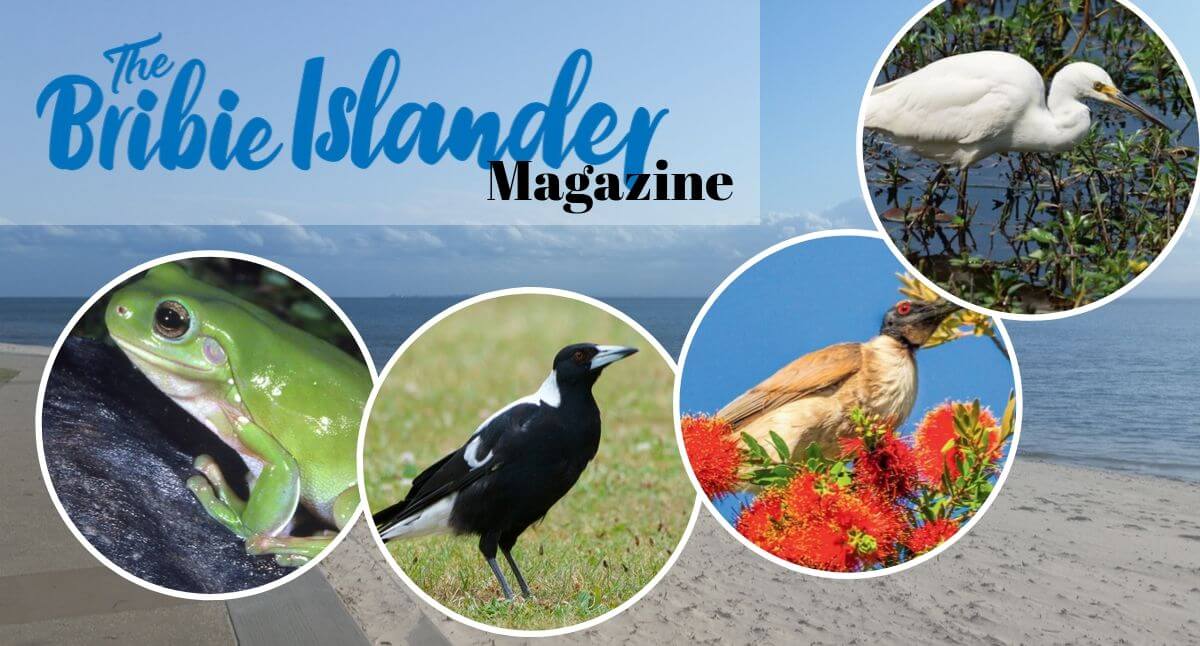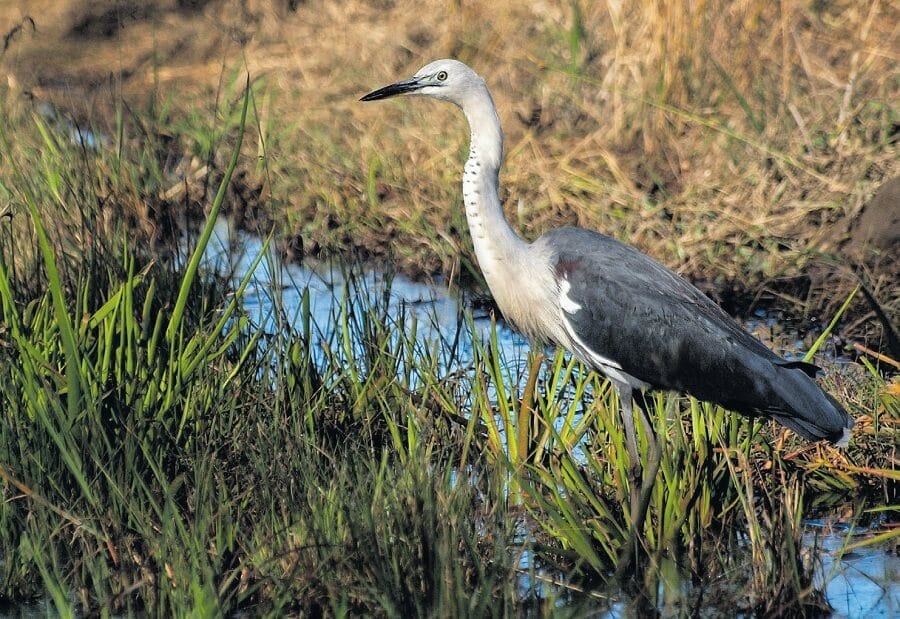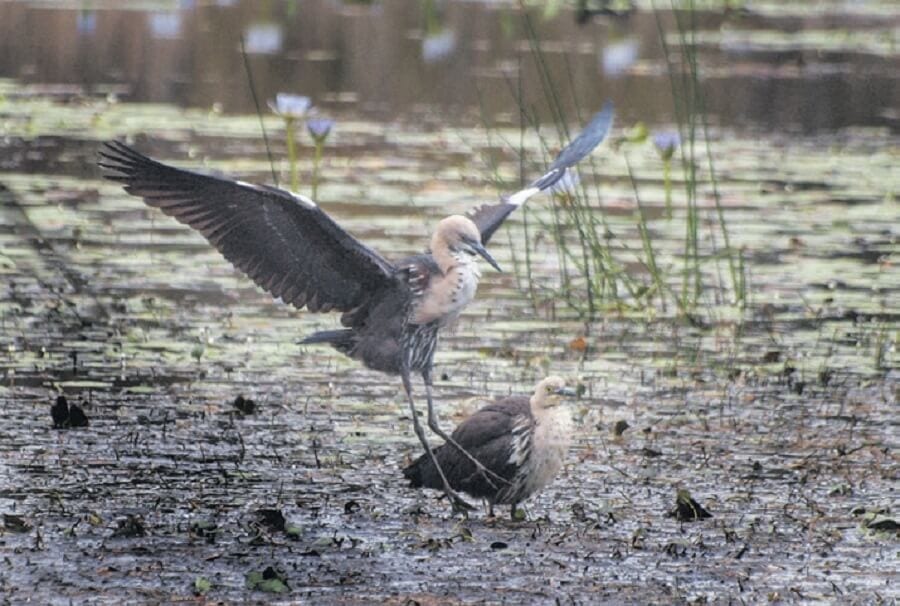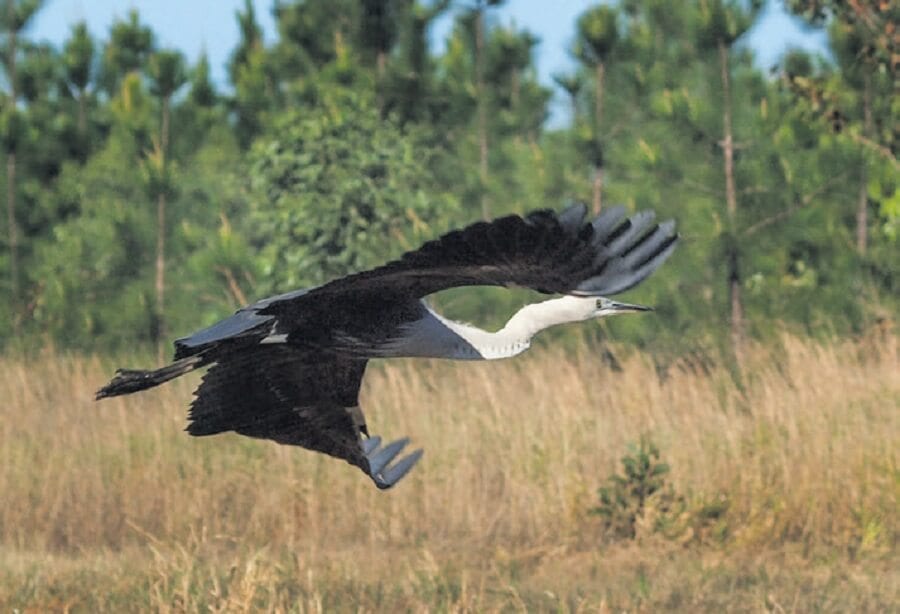Tags: Native Wildlife. Birds. White-Necked Heron – Ardea Pacifica. Bribie Island. Moreton Bay. Queensland. Australian.
White-necked Herons are occasional visitors to Bribie Island and are almost always seen near shallow waters. I have seen them on several occasions at Buckley’s Hole and as recently as just before Christmas 2019 there was one foraging along the margins across from the hide. White-necked Herons are large predatory carnivores 75-106 cm in length and weighing 600-1200g.
Herons are much like egrets but are more colourful. They have long white necks with double rows of black spots running the full length when in nonbreeding plumage. Wings are dark with noticeable white markings on the edges of the upper wings. Legs are long and black; eyes are green, and bills are shorter than the bills of other herons. Males and females are similar with females usually a little smaller.
When in flight their legs stretch back behind their tails and necks are slightly bent. Wingbeats are slow and deep. They also take advantage of thermals soaring high in the air. Their voice is a harsh single or double croak. They are not as common as Whitefaced Herons but are highly mobile and occur in a much wider area and are found almost anywhere there are suitable freshwaters.
Habitats are shallow waterways around 7 cm deep in wetlands, on-farm dams, roadside puddles and shallow lakes but not usually on salty mudflats. They are widespread throughout Australia with numbers fluctuating according to the availability of suitable feeding grounds. Manmade dams and watercourses have provided many more habitat options and herons have benefited.
When waters dry up they move on to other areas where there are water and food. Usually quite a wary bird they tend to stick to open areas where they have a clear view of any impending danger. They have become well adapted to the harsh climatic conditions in Australia and are also found in Indonesia, PNG and New Zealand. Food is mainly made up of fish, crustaceans, insects and any small creatures they find including small nestlings of other birds.
They mostly forage singly, in pairs and occasionally in small sieges wading through shallow waters. Sometimes food is stolen from other birds. Breeding can take place at any time of the year in favourable conditions. In our area the most likely breeding time is between August and February and in the north, it is more likely to be between January and April after the monsoons arrive.
During this time, they develop maroon feathers on their backs and breasts. They are thought to be monogamous and often form colonies with other birds such as egrets, cormorants, Ibises and spoonbills when nesting. Males perform a dance to attract females during the courting season. Nests are built by males and are untidy platforms of sticks about 40-50 cm wide built at 15-30 m in trees usually above water. Clutches of 4-6 blue-green eggs are laid and incubated by both parents for about 30 days.
Food is regurgitated and fed to the downy chicks by both parents. If food is scarce weaker chicks will be tossed from the nest by their stronger siblings. Usually, only 2 babies will remain alive at fledging. When the babies are small both parents take it, in turn, to stand at the nest with wings outstretched to provide shade. Young can fly at 6-7 weeks. Nesting range can be quite flexible with the parents going where conditions are right and if conditions remain stable for several years the nests can be used again and again. White-necked Herons are sometimes called Pacific Herons.
A group of herons is called a “siege”. Threats to White-necked Herons are predatory animals such as feral cats, foxes, reptiles and raptors. Droughts can disrupt nesting procedures and thus lessen the number of offspring produced. They are widespread throughout Australia, but little is known about their population status. More study is needed to fill in the gaps for herons and other birds about their biology, movements, habits and population trends. Their conservation status is thought to be secure.



